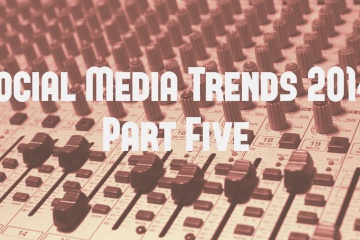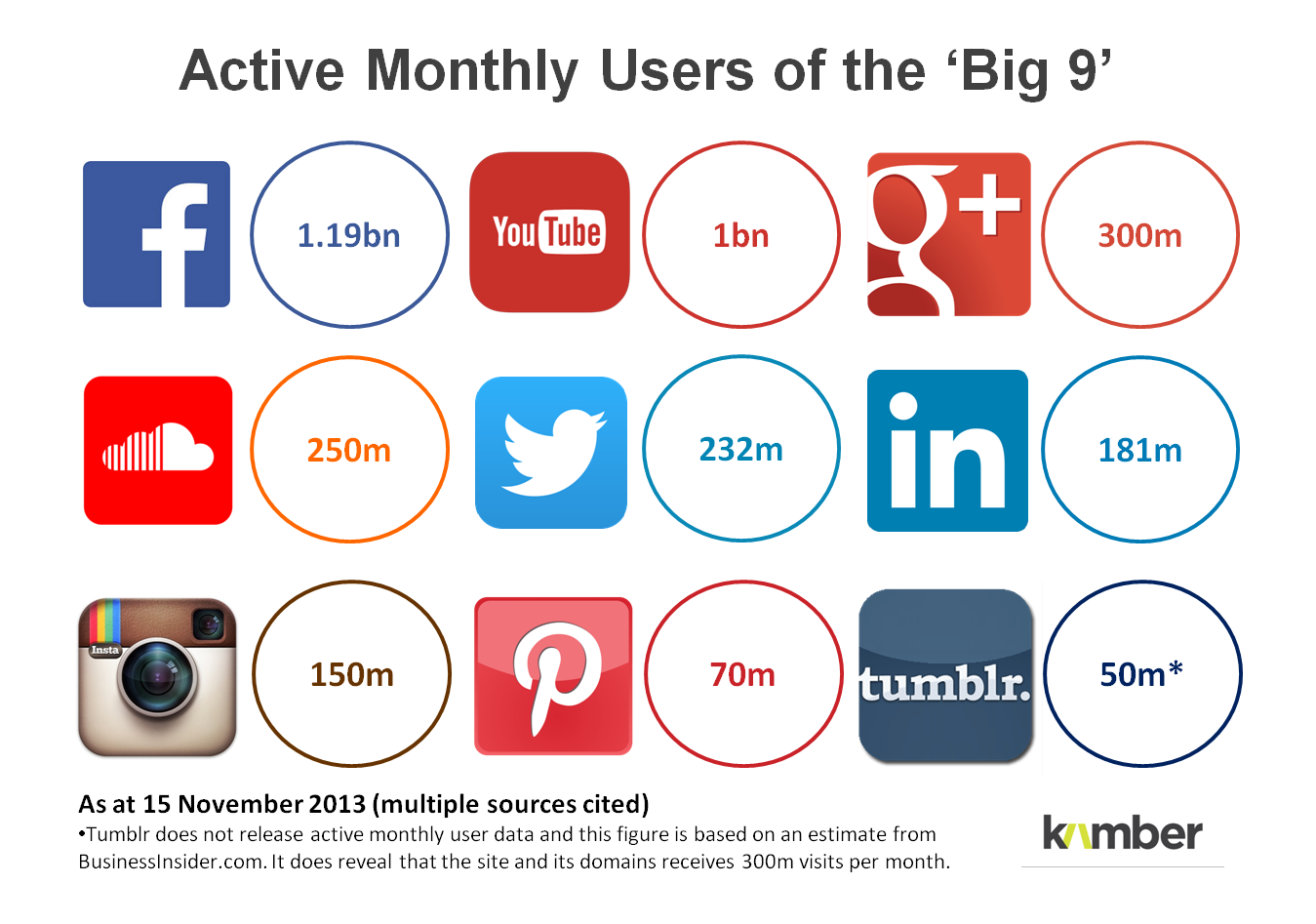Social Media Trends 2014 (Part Five): SoundCloud Gets Loud

View the full Social Media Trends 2014 SlideShare summary here.
Social Media Trends 2014 (Part Five): SoundCloud Gets Loud
Welcome to part five our our 14-part Social Media Trends 2014 series.
When podcasting began to permeate the mainstream in 2004 it was hailed as a ‘game changer’.
While that term is often overused and misused, it is fair to say that the ability to produce and publish audio content so simply was a very significant event in the evolution of modern communications.
In recent years, social media has been the shiny new toy that has been talked about to almost obsessive levels, leaving the humble podcast to be devalued in many people’s eyes.
However, it appears that podcasting or any form of audio recording and sharing, is on the rise again.
Why? Because social media has provided audio content with a sharing and delivery mechanism.
And, we’ve become quickly accustomed to identifying content creators who share the same specific passions that we do, as opposed to the more general content served up by traditional media.
There is one platform in particular which, ironically, has been a silent superstar in recent times but looks set to become THE platform of 2014.
That platform is SoundCloud.
Trend Five: SoundCloud Headlines the Audio Sharing Renaissance
SoundCloud is definitely the sleeping giant of the ‘big 9’ social sharing platforms.
It has more monthly active users than Twitter, LinkedIn and Instagram.
And, SoundCloud has added 50 million new users in the last four months.
At that pace, it isn’t unrealistic to suggest that SoundCloud will have YouTube-like popularity one day.
In fact, my good friend and fellow blogger Trevor Young, likens SoundCloud to the popular video sharing destination:
“While video gets the lion’s share of attention when it comes to multimedia content – and rightly so, given the power of YouTube – audio is the unsung hero, quietly racking up ‘listens’, along the way helping individual and company brands (the audio producers) to grow their audience and increase their influence.
“Podcasting is the heavy duty use of audio on the social web; it takes time and effort to build an audience but iTunes can be a great help in helping podcasters reach new audience frontiers. However, for the more sporadic use of audio, consider SoundCloud, which I call the ‘YouTube of audio’ in that it operates in a similar way: upload the audio file, and embed the audio player on your website or blog. SoundCloud is also a social network in the same way YouTube is a standalone social network”.
With all this context in mind, there are three key questions that need to be answered:
- Why is this trend emerging now?
- Is the recent surge in active users enough proof to say that a new era of audio content production and sharing has arrived?
- Most importantly, how should brands and businesses capitalise on this trend?
Let’s address the ‘why’ question first.
Why has SoundCloud exploded?
There are a bunch of factors but here are the main ones:
- They’ve got it right – SoundCloud was the first legitimate attempt at creating a platform for audio sharing in the contemporary context of the social web. It has fulfilled a need for people who love consuming and sharing their favourite forms of audio content. It has also given aspiring content creators a platform to be heard. SoundClound identified a need, a solution was developed and it has evolved based on the habits and feedback of the user base.
- It’s not trying to be Spotify or iTunes– When Spotify burst onto the scene, a number of copycat services followed suit. But SoundCloud isn’t just a platform for professional musicians, it’s a democracy, and it features audio books, business ‘podcasts’, storytelling features and comedy. It’s an audio hub, not a music hub. As for iTunes, one of its most glaring issues is the search and discovery function. SoundCloud is a much more open platform than iTunes which is a distinct difference and advantage.
- Timing is everything – The broader topic the audio sharing renaissance has also played a major role. The explosion of social media enabled real-time conversations and open recommendations that crossed traditional borders. It led to the adoption of platforms like Facebook but now brands and businesses are asking themselves how they can deliver good content as opposed to just delivering a good social media experience. A great way of creating cost-effective content is audio-based ‘products’ so SoundCloud has capitalised on that natural evolution.
- Technology – Just as smartphones, faster broadband and other technological developments have helped fuel the rise of YouTube and Facebook, the same has happened with SoundCloud. Recording and sharing ‘sounds’ can be performed at the touch of a button.
- Promotion – The issue traditional audio content creators always faced was promotion. No matter how great the product was, unless it had promotional clout behind it you couldn’t build an audience. 250 million people is a huge audience and with social media plugging in and out of SoundCloud, content promotion and sharing has being fulled even more. This has encouraged more content production, more listening and more usage.
Is this meteoric rise in (silent) popularity enough proof of the audio renaissance?
On it’s own, no.
But, it does suggest that people have a hunger for audio content, especially from non-mainstream sources.
Expect to see SoundCloud pass the 300m user mark in the first half of 2013 which will add even more weight to the ‘audio is back’ argument.
How can brands capitalise on this trend?
In a million ways.
Harvard University records lectures and publishes them on the Harvard SoundCloud channel.
The mountain of branded ‘Podcast’ content can be re-published on SoundCloud.
Beyond SoundCloud, the concept of audio content production is compelling in a number of ways too.
It is cost-effective.
It tells stories in a different way.
It can be useful and / or entertaining in a compelling way.
It can turned around quickly if required.
It can be recorded anywhere.
The key thing to keep in mind, as with any content marketing activity, is that it needs to be powered by the right strategy and must fit within a broader content mix.
The biggest mistake brands and businesses continue to make with YouTube is that they treat it in a solely ad hoc manner.
YouTube channels are called channels for a reason. And channels, by definition, feature regular programming.
So while SoundCloud and the audio content renaissance is exciting, it shouldn’t be jumped at because it is the new shiny toy.
This brings us to the next part of the Social Media Trends 2014 Series where we’ll look at the decisions brands and businesess need to make regarding social media platform prioritisation.
Not many brands and businesses can deliver great content and great experiences across each of the ‘Big 9’.
This is why 2014 will be the time for social media focus, not social media excess.
We’ll post that up in the next few days.
About Kamber
Kamber is a specialist content marketing and social media agency based in Australia.
We help brands and businesses plan, produce, publish and promote digital content that people crave.
